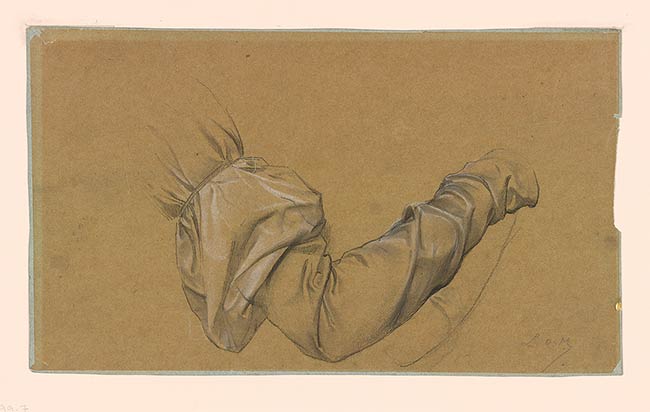
Merson won the Prix de Rome in 1869 and spent five years in Rome, where he became passionate about the works of Italian Renaissance painters. Upon returning to Paris, he built a career as a designer and a decorative painter, working on interior schemes for the Hotel de Ville, Palais de Justice, the Panthéon, and the Opéra-Comique, as well as serving as a professor of drawing at the Ecole des beaux-arts from 1894-1906.
This drawing relates to the artist's last project, which was left uncompleted at his death. A large monochrome canvas devoted to the “Glorification of Peace” is now in The Hague's Carnegie Foundation Peace Palace. On a throne at the center sits an allegory of Peace trampling on Mars, the god of War. Allegories of other virtues surround her as four trumpeting angels hail her. A couple representing Concordia is shown at lower right. A young man in medieval dress plants his sword in the ground as he embraces a young woman seated on a fallen column. The present study is for the sleeve of her right arm, which is raised as she places her hand on the man's shoulder. In the painting, his hand cups her elbow.
The canvas was expected to serve as a model for a tapestry that was never woven. Merson's efforts to celebrate peace came in the wake of the First World War as France tried to recover from its heavy losses and devastated economy. France donated the artist's painting to the Peace Museum, which opened its doors in 1913.
Inscribed with initials, in black chalk, at lower right, "L.O.M."; inscribed in pencil on back of old mount, "Sental? Vente".
Stern, Anne Bigelow, donor.
